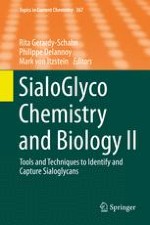
2015 | OriginalPaper | Chapter
Sialic Acid Receptors of Viruses
Authors : Mikhail Matrosovich, Georg Herrler, Hans Dieter Klenk
Published in: SialoGlyco Chemistry and Biology II
Publisher: Springer International Publishing
Activate our intelligent search to find suitable subject content or patents.
Select sections of text to find matching patents with Artificial Intelligence. powered by
Select sections of text to find additional relevant content using AI-assisted search. powered by